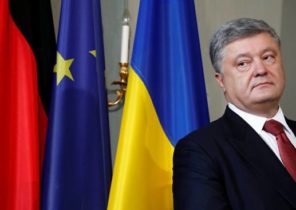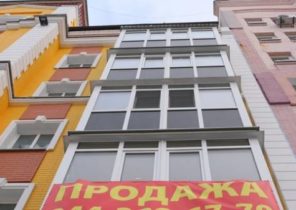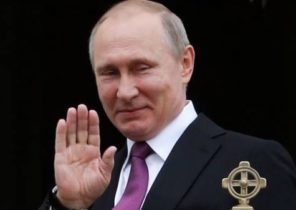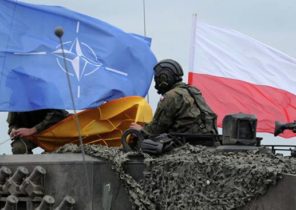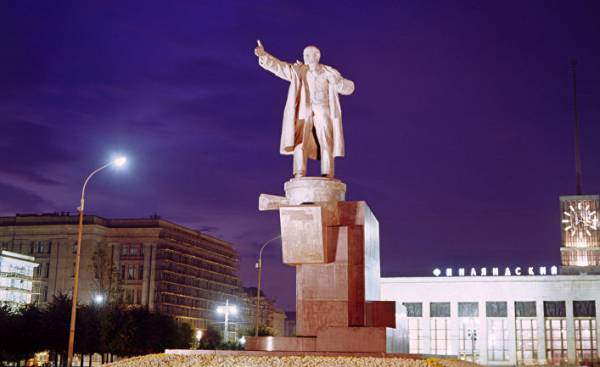
Many people know that this year the Russian revolution will celebrate its 100th anniversary. In the coming months will certainly be a lot of articles and documentaries about the drama filled months in 1917.
The consequences were incredible, and they continue to cause many disputes among historians. Some believe that Vladimir Ilyich Lenin paved the way for the struggles of workers and social justice, including in the democratic form. Others would say that social justice is not the merit of Lenin and the Bolsheviks on the contrary have created the social evil which could be avoided, that Russia has lost a great opportunity to develop in a democratic way and that we received a new world war and totalitarian, mixed with blood of the state as a bonus. Historians claim that Communist States killed 100 million people. And it started in 1917.
But in this article we are not talking about disagreements among historians. It is dedicated to misconceptions.
Abstract
For many young today, the history of communism — something as abstract as the hundred years war. Lenin became a symbol of the old popular culture. He is the man with a Cup, which you can buy at the checkpoint Checkpoint Charlie in Berlin together with plastic fakes, and stuff from the dump communism. The most common misconception that Lenin belongs the honor of the overthrow of the Tsar. Often, the February revolution and the coup d’etat, carried out in October of the same year, mentioned with the same reverence. But we’re not talking about any particular event. As in the case of the French revolution, initially a political movement for various reasons, have ended in tyranny and terror.
In February 1917 (Russian calendar) the Tsar was silenced, and quietly removed from power by a coalition of liberals, social Democrats, socialists and anarchists. They wanted to bring Russia into a parliamentary democracy. The Bolsheviks were not interested in this. In the chaos of world war, Lenin took the opportunity to make Russia a Communist state, in a way that can be called a coup. The moderates have been overshadowed by well-organized revolutionaries. At the existing institutions there was no chance. The coup occurred without the support of the majority and despite the loud protests. So cleaning, in the opinion of the Bolsheviks, was a must. People need to learn — if need be, and with an iron hand. As you know, everything is delayed.
While the king and his family were under house arrest during the October revolution, the Bolsheviks decided to deal with them. In July 1918 the entire Romanov family, including five children and servants, and commanded to descend into a dank basement in the manor near the city of Yekaterinburg. There killed them all. Death was painful and long.
Communist terror
In fact, here it would be possible to stop, because these killings are “established” standards of terror, who was destined to become a hallmark of all future Communist regimes.
Another misconception spread almost as wide. It concerns the idea that Lenin let the rules very rigidly, but nevertheless did, and a lot of good. While in the story of a totalitarian turning point in the revolution did not appear to be so bad as Stalin.
At best it is only a half-truth. The difference between these two lies primarily in the fact that Stalin was paranoid. If persecution carried out by Lenin, set itself the ideological tasks, the Stalinist purges were crazy. It concerned both the form and the number of fatalities. But in the state, which was to become the Soviet Union, a totalitarian state system was introduced by Lenin.
Lenin was obsessed with the idea of creating a new humanity. Honestly, there was nothing strange in a time when positivism was the dominant philosophical and sociological thought. In Norway, many — in particular, Karl Evanga (Karl Evang) — also concerned with the creation of a new humanity. Of science, and an optimistic faith in the future, and ultimately the possibility of a socialist state in the service of good was limitless.
Eugenics
In 1934, Awang wrote in the pamphlet “Racial politics and the reaction to the Idea of, for example, that it is necessary to limit the number of carriers of bad heredity, in a completely rational way, socialism always supported it. In a socialist planned society, it will naturally be included in preventive health activities.” Carl Evang flirted with the theories of social care, the Swedish social Democrats was wholly absorbed by them. The socialists belonged to the eugenics indifferent, denied racial theory, but advocated what they called social hygiene.
Many Marxists believed that the men spoiled by false consciousness (related to religion, class, property relations, history, traditions), and that the revolutionary process will change the consciousness in order that people could live freely and in accordance with their capabilities. The goal was not only to change policy, but to do policy. Through the policy could change human psychology, to make him a member of the team to get closer to the historic socialist goals.
Fanatical Lenin
Here Lenin was a real fanatic. In his picture of the world the individual was a pathetic abstraction, while the new band was all about. Lenin believed that the old Russia is rotten on the vine because of the individualism and sincerity. “Communism does not tolerate individualistic tendencies,” he wrote: “They are harmful and destroy our business. We need to abolish individualism.”
According to the Bolsheviks, the old had to be destroyed, but instead had to be built something completely new. What was supposed to present this new, immediately was defined by Lenin and his comrades in the party, and the transition was supposed to occur through violence, coercion and indoctrination. The Russian people had to drive in the same form in order to “melt”.
Say that the famous scientist Ivan Pavlov was horrified when he learned that the Bolsheviks consider his behavioral experiments with dogs as a recipe for social engineering. “Man can be corrected — supposedly said by Lenin. — Because a person can do what we want.”
Later, the sociologist and critic of the regime Alexander Zinoviev described the prototype of a social engineering art as homo sovieticus (Soviet man).
Deported philosophers
The fact that the Bolsheviks seriously treated his self-proclaimed pedagogical project, it became clear pretty early. Universities are smoothed by the dissent. In 1922, Lenin was allowed to deport some of the most prominent philosophers of Russia from the country on the boat. They could choose between a short life in the basement of the Lubyanka, headquarters of the Cheka (forerunner of the KGB) and life in exile. What philosophers, in essence, were socialists, did not play a role. To fit in with the canons of scientific socialism were very problematic.
In art and literature was also given clear instructions regarding the service of the revolution. For instructions hiding bad hidden the muzzle of the rifle. Instructions handed out specially created Department of agitation and propaganda. There has been no attempt to hide that the objective of art and education were conducting an ideological war. “We can and must write in language which sows hatred, aversion, contempt, etc against those who disagree with us”, — wrote Lenin about it. Stalin also formulated a similar, though more delicately. To him belongs the famous phrase that “a writer should be an engineer of human souls”.
Revolution
And Marx and Lenin were mostly justified violent revolution that the ruling class voluntarily neither the power nor the means of production will not give up. The revolution is the same as the state of war, a change occurs in the course of the struggle, not dialogue, because the enemy is part of the fundamental institutional structure of society.
The civil war that followed the revolution, led to what is called “war communism”. But “war communism” was also the reason for the imposition of the command economy and the massive purges of political dissent, which did not fit into the party line.
Many associate those who gave Lenin the resistance, with the so — called whites- the army of the supporters of the king and the reactionaries. But in fact the picture was much more complicated. Protests against the authoritarian and violent behavior of the Bolsheviks was massive. They, in particular, originated among liberal socialists and other liberal groups.
The shortage of bread
Illustration can be two events that occurred in 1921. In Petrograd (now St. Petersburg) began a major strike in protest against the shortage of bread and the oppression of political freedoms. City status in the Bolshevik mythology was high. It was here that the famous sailors mutinied against the king and stormed the Winter Palace in October 1917. So the excitement of Bolsheviks scared. They feared a new rebellion, so the sailors seized the shoes — to those not out on the street.
The whole Petrograd was festooned with proclamations with the requirements of the freedom of speech, press, elections, economic freedom for peasants and the right to establish workers ‘ organizations. The protesters also demanded the release of the arrested Bolsheviks, socialists and anarchists.
Strikes and unrest quickly spread across the country. Especially known the so-called Kronstadt rebellion. Here the sailors of the ship “Petropavlovsk” went on a campaign of civil disobedience and put forward a number of requirements to the Bolsheviks. The population of Kronstadt quickly joined the rebels.
Here, too, was painful for Lenin symbolism: base in Kronstadt played a significant role in the October days of 1917, and the sailors believed loyal to the Bolsheviks. But many of them were anarchists. Others were Communists, but believed that Lenin had betrayed the ideals of the revolutionary free. Therefore, they put forward a demand to hold free elections, allow the congregation to give freedom to the peasants and to stop the persecution and liquidation of “left” and trade Union representatives.
Probably don’t even need to mention that the unrest in Kronstadt and Petrograd were brutally suppressed. Protivniki the Bolsheviks gained more and more supporters. Thousands of people were killed in the fighting and more were to be shot.
The new economic policy
The events of 1921, no doubt contributed to the distrust of the Bolsheviks to their own people increased. Many wrote about the fact that Lenin actually retreated — he’s a little weakened control over the command economy and gave farmers the right to sell the manufactured products. To reduce the food shortage, he introduced the so-called NEP (new economic policy). But this occurred in parallel with increased political repression. And if Russia became fully totalitarian state until 1921, it became to them in subsequent years. Petrograd and Kronstadt perfectly demonstrate how the revolution devours its own children.
The revolution led to the emergence of a new type of criminal: the class enemies and counterrevolutionaries. These two designations were later to use in all Communist dictatorships, justifying persecution and murder opponents of the regime.
Killed 10 million
There are no exact figures that would indicate how many people were killed during the revolution. Mao, Stalin and Lenin were United, they ruled in a time when famine, terror and the disastrous economic policies alternately claimed countless lives. Just killed 10 million people. Only as a result of the 1921 famine killed 5 million. It was at that time was created by the well-known grotesque images of emaciated peasants, who sell parts of human bodies. the Famine was, wrote the historian Orlando Figes (Orlando Figes), created partly by people and partly by God. That is, it was the result of a poor harvest, a planned economy, but also use the situation as a means of political blackmail.
A large part of other losses to explain the civil war. In addition to this, the political terror of Lenin claimed hundreds of thousands of lives. A few million people emigrated or were deported.
In the era of Lenin may be given and the losses that occurred later. Although Stalin remained in history as one of the worst mass murderers, there is no doubt that Lenin and the Bolsheviks created the institutional and ideological basis for an even more terrible terror, who was destined to begin then.
However, it is not clear that the fact of the violence of Lenin on “left” and ban their trade unions” has made at least some impression on those who trust the new promising version of the story.
All a free thinker of radical youth, which these days is interested in the Lenin, I want to say: “it is possible that he would have not appreciated”.
History is not a linear process, but it seems that it sometimes moves in a circle. Enemies pop up in the most bizarre forms. In the East, Stalin is considered the most prominent figure in the history of the world, as shown by a recent survey in Russia. And when, in these critical days we will remember Lenin, it may be worthwhile to read not only romantic page. A great start can be a great work of Orlando Figes about the years of the revolution, “the Tragedy of the people” (A Peoples Tragedy).
Bord Larsen (Bård Larsen) — historian and project Manager at a think tank Civita
